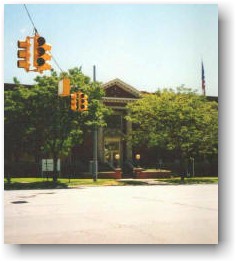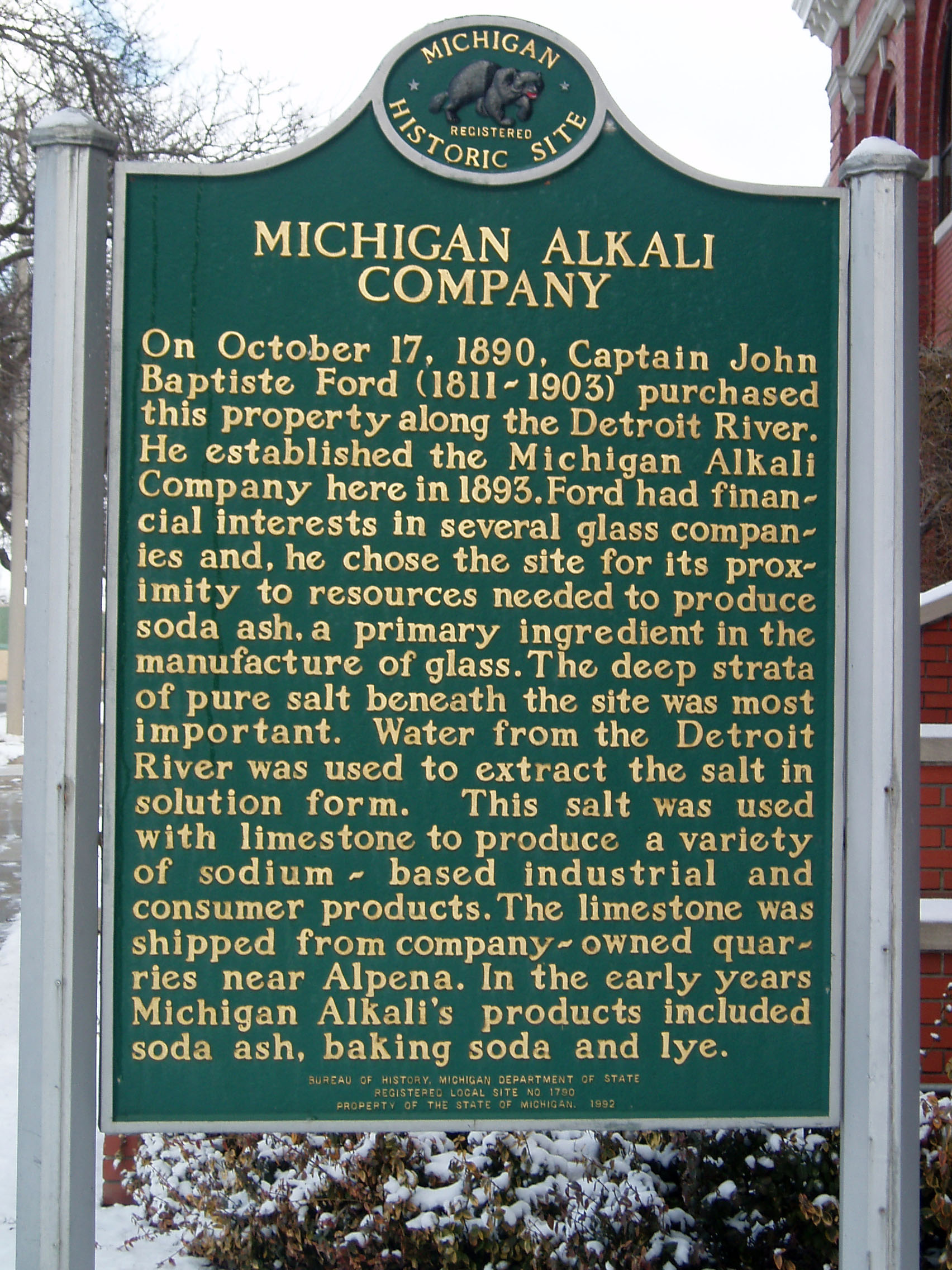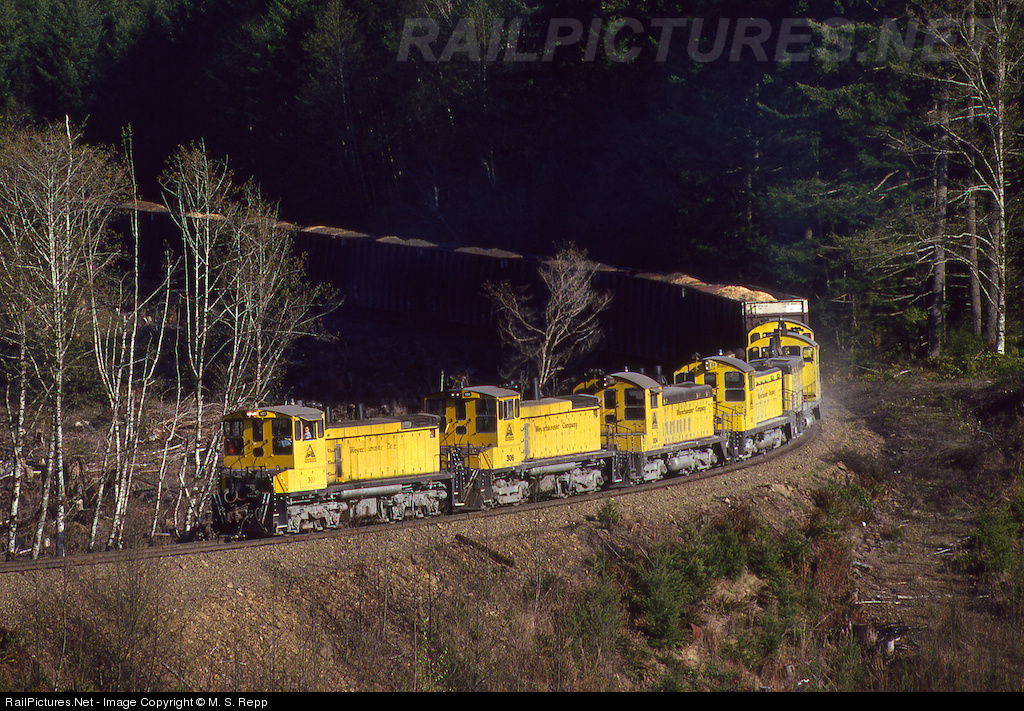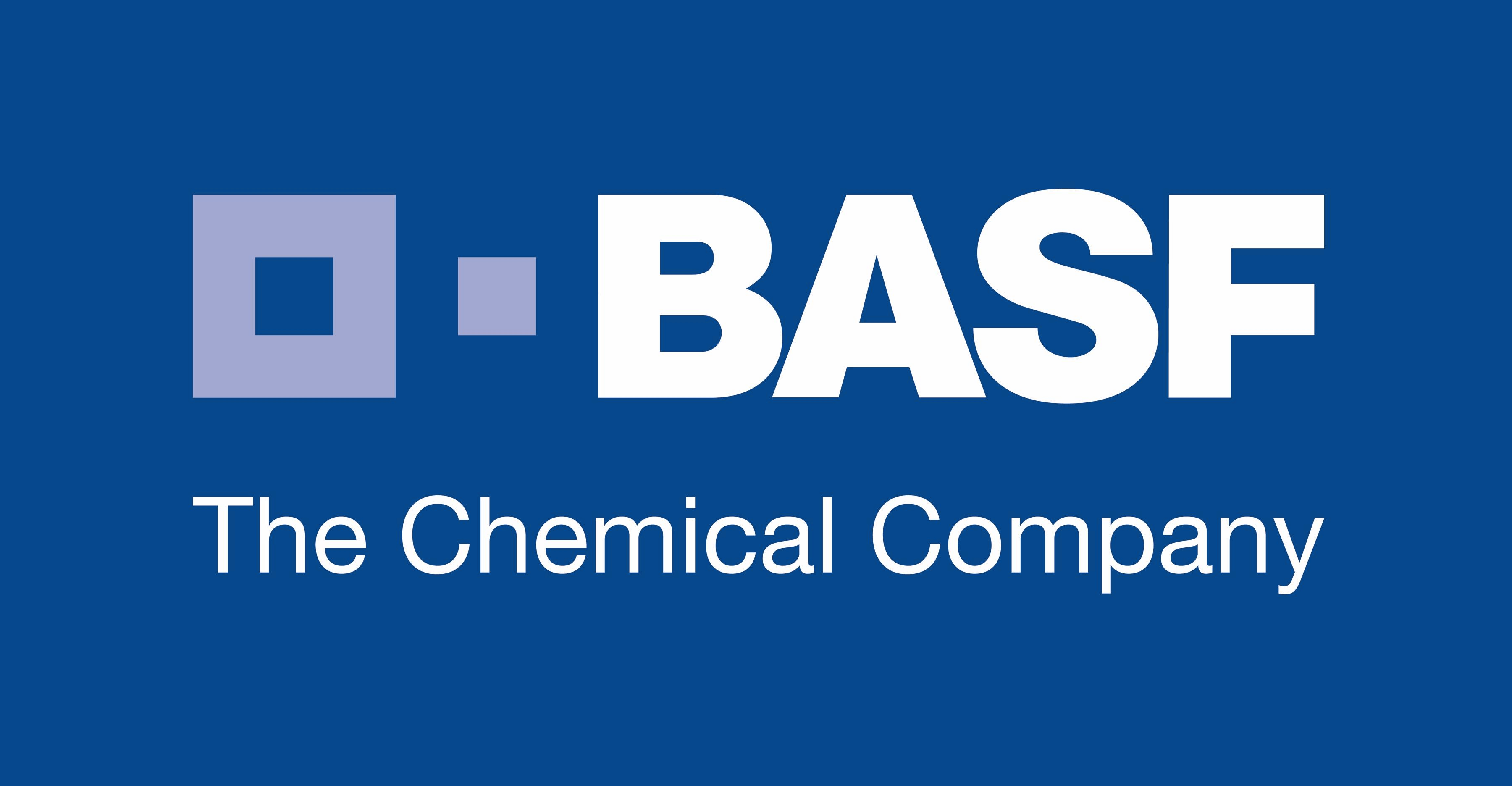Company History: On October 17, 1890, Captain John Baptiste Ford (1811-1903) purchased this property along the Detroit River. He established the Michigan Alkali Company here in 1893. Ford had financial interests in several glass companies, and he chose the site for its proximity to resources needed to produce soda ash, a primary ingredient in the manufacture of glass. The deep strata of pure salt beneath the site was most important. Water from the Detroit River was used to extract the salt in solution form. The salt was used with limestone to produce a variety of sodium-based industrial and consumer products. The limestone was shipped from company owned quarries near Alpena. In the early years, Michigan Alkali's products included soda ash, baking soda and lye.
Since incorporating as the Michigan Alkali Company in 1893, these chemical works have played an integral role in the development of Wyandotte. The founder of the company, John Baptiste Ford (1811 - 1903), believed in corporate benevolance and generous donations were made to the city. The corporation continued this practice after Ford's death. One contribution was the first Wyandotte General Hospital, erected in 1926. In 1943, Michigan Alkali consolidated with the J.B. Ford Company Glassworks to become the Wyandotte Chemical Corporation. In 1969 it became part of the BASF Group of companies, headquartered in Germany. BASF continues to use this Georgian Revival administration building, designed by the Detroit firm of Chittenden and Kotting and completed in 1907.
Since incorporating as the Michigan Alkali Company in 1893, these chemical works have played an integral role in the development of Wyandotte. The founder of the company, John Baptiste Ford (1811 - 1903), believed in corporate benevolance and generous donations were made to the city. The corporation continued this practice after Ford's death. One contribution was the first Wyandotte General Hospital, erected in 1926. In 1943, Michigan Alkali consolidated with the J.B. Ford Company Glassworks to become the Wyandotte Chemical Corporation. In 1969 it became part of the BASF Group of companies, headquartered in Germany. BASF continues to use this Georgian Revival administration building, designed by the Detroit firm of Chittenden and Kotting and completed in 1907.
Successor/Parent History: BASF SE is an initialism And Portmanteau for its original name Badische Anilin- und Sodafabrik (German for 'Baden Aniline and Soda Factory'), is a European multinational company and the largest chemical producer in the world. Its headquarters are located in Ludwigshafen, Germany.
The BASF comprises subsidiaries and joint ventures in more than 80 countries and operates six integrated production sites and 390 other production sites in Europe, Asia, Australia, the Americas and Africa. BASF has customers in over 190 countries and supplies products to a wide variety of industries. Despite its size and global presence, BASF has received relatively little public attention since it abandoned the manufacture and sale of BASF-branded consumer electronics products in the 1990s.
The BASF comprises subsidiaries and joint ventures in more than 80 countries and operates six integrated production sites and 390 other production sites in Europe, Asia, Australia, the Americas and Africa. BASF has customers in over 190 countries and supplies products to a wide variety of industries. Despite its size and global presence, BASF has received relatively little public attention since it abandoned the manufacture and sale of BASF-branded consumer electronics products in the 1990s.
Brief History: The U.S. is a country of 50 states covering a vast swath of North America, with Alaska in the northwest and Hawaii extending the nation’s presence into the Pacific Ocean. Major Atlantic Coast cities are New York, a global finance and culture center, and capital Washington, DC. Midwestern metropolis Chicago is known for influential architecture and on the west coast, Los Angeles' Hollywood is famed for filmmaking.
Item Links: We found: 1 different collections associated with Michigan Alkali - Chemicals
- Collection N Scale Model Trains: 4 different items.
Item created by: gdm on 2017-10-10 09:57:26. Last edited by Powderman on 2021-02-15 10:42:35
If you see errors or missing data in this entry, please feel free to log in and edit it. Anyone with a Gmail account can log in instantly.
If you see errors or missing data in this entry, please feel free to log in and edit it. Anyone with a Gmail account can log in instantly.










